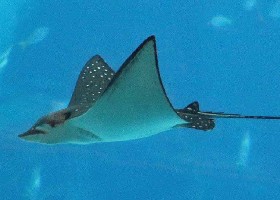(White-)Spotted Eagle Ray Aetobatus narinari
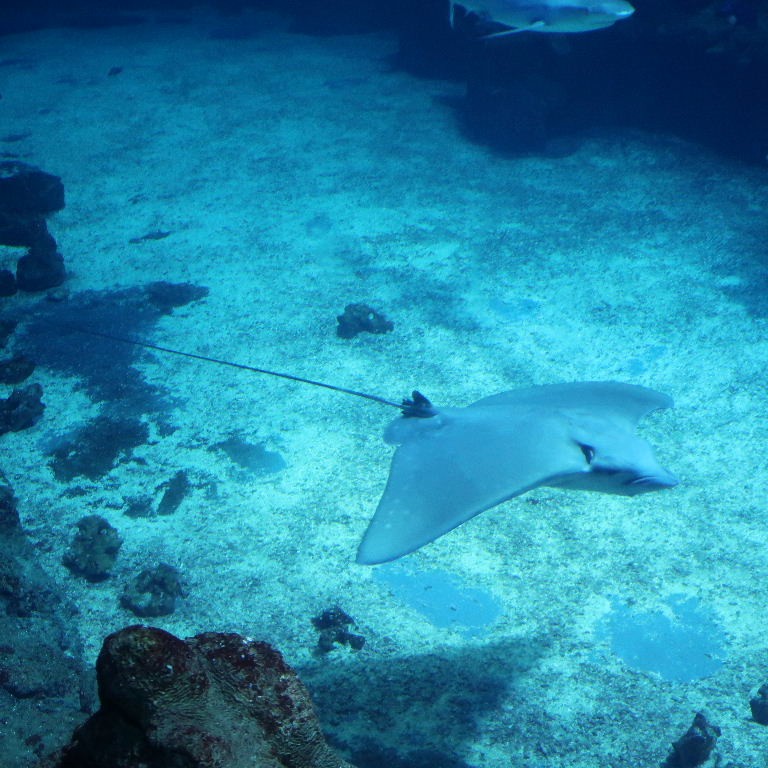
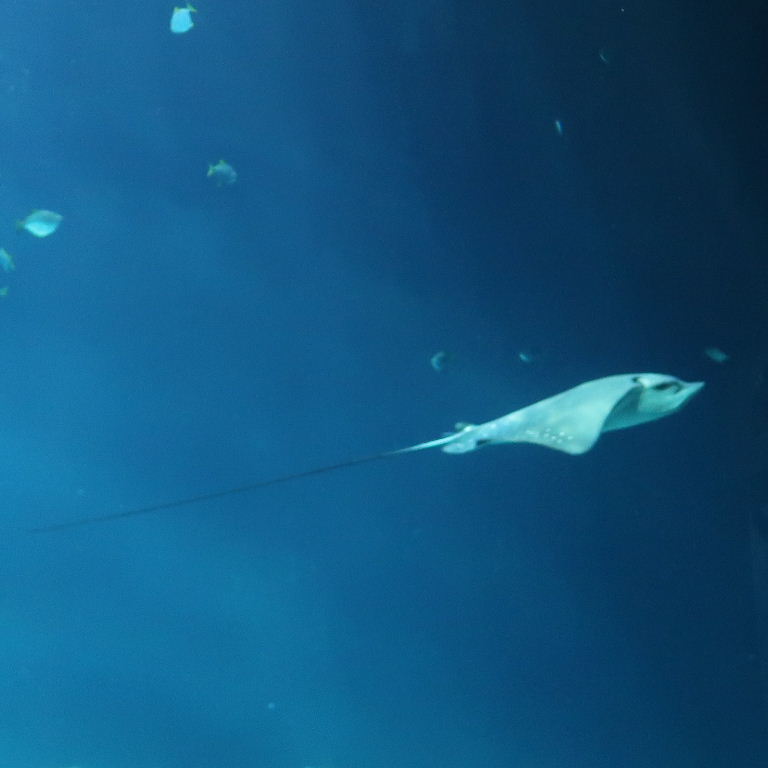
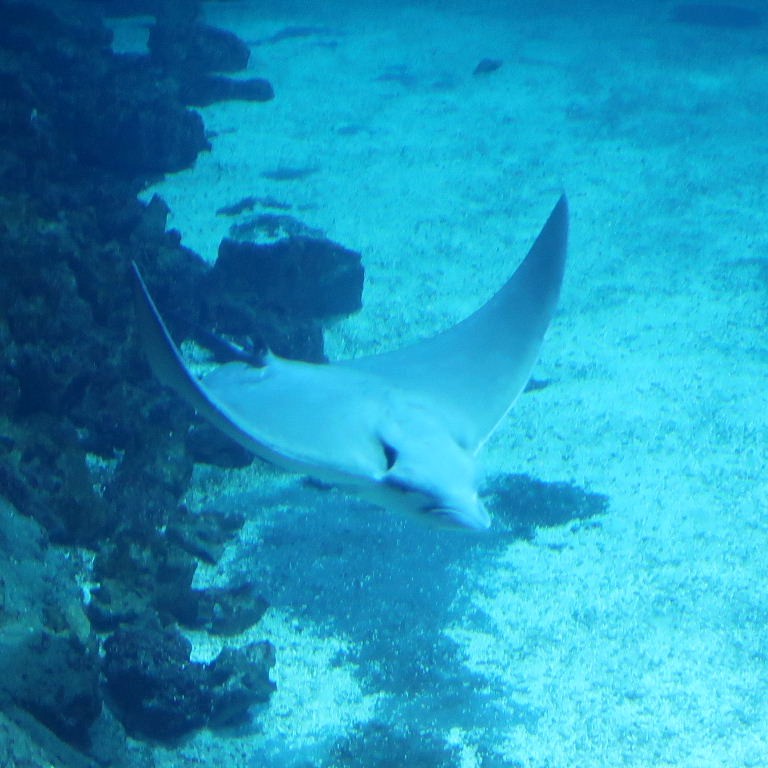
The Spotted Eagle Ray, also called the White-spotted Eagle Ray, is native to tropical sandy coasts and reefs
of the Atlantic Ocean. The number and pattern of white spots on the dark surface is variable.
It has a pointed snout. The top side is brownish or grey. The underside is white.
Among the largest marine rays, it can grow to over 3 metres wide, but is usually half that, and a long, thin tail which, if unbroken,
can be over twice the disc width and has a venomous spine.
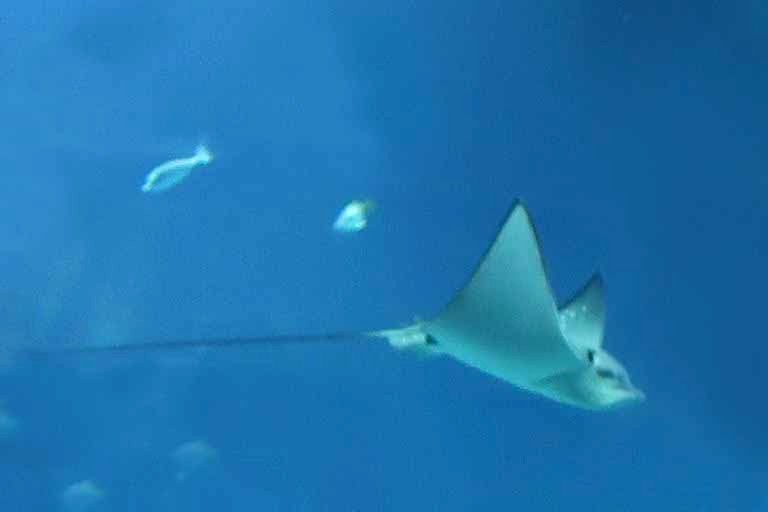
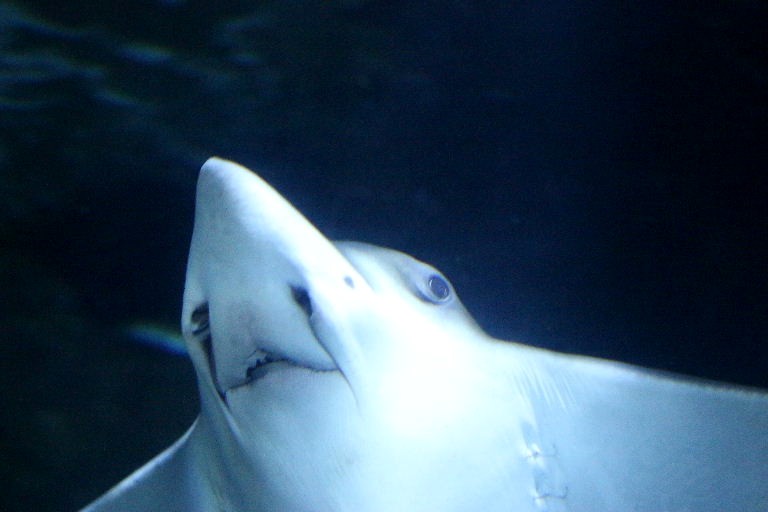
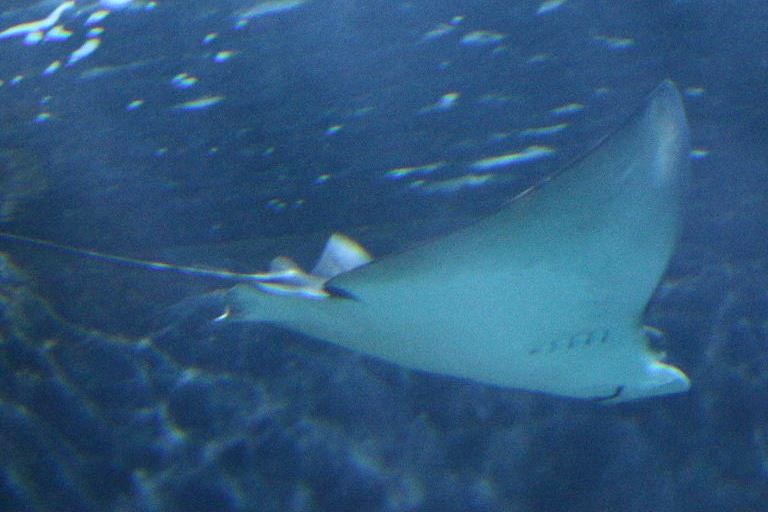
Until 2010, the name Ocellated, Spotted and White-spotted were used interchangeably for the
eagle rays with white spots prevalent in tropical, coastal waters worldwide, thought to be one species.
They have now been separated into three species by geographical region, so that the Ocellated (A. ocellatus) is the species
in the Indo-Pacific, the (White-)Spotted is in the west Atlantic including the Caribbean and, as far as I can tell, the east Atlantic
along West Africa and the Canary Islands, and the (Pacific) (White-)Spotted (A. laticeps) is along American west coasts.


